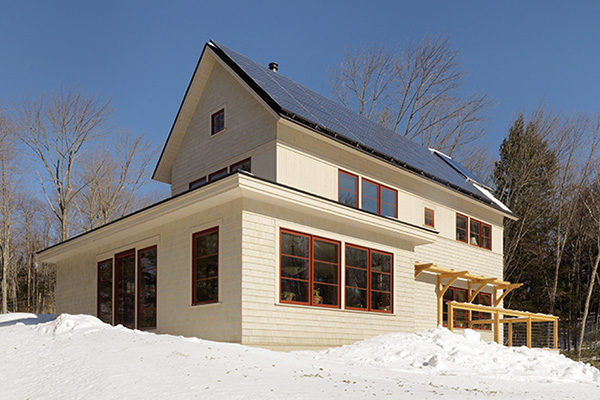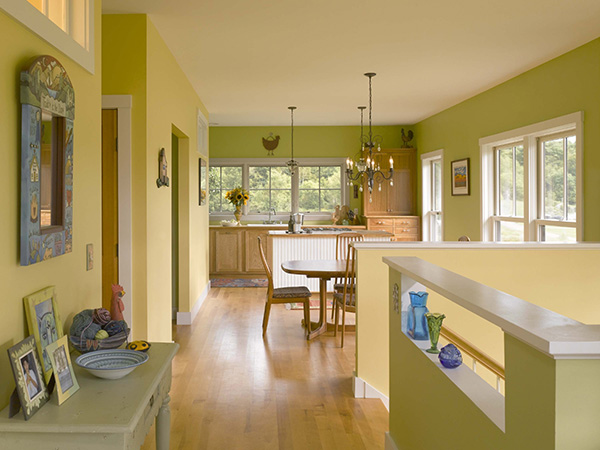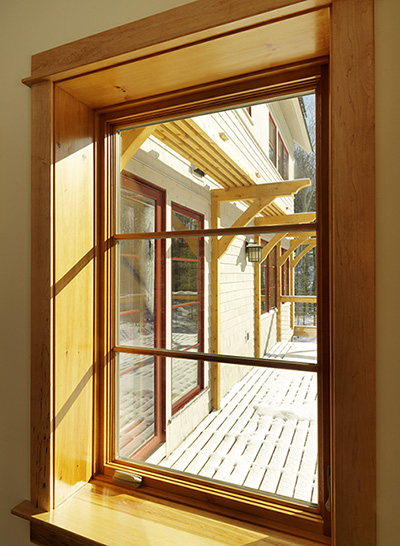Getting to Net Zero: Bundling Up with a Warm Winter Coat
When we think of Net Zero homes, we tend to visualize solar photovoltaics and other energy generating equipment. But to achieve true net zero performance, we must deal with the demand side before we think about the supply. In other words, we should minimize the amount of energy we need, by reducing heat loss, so we don’t need to provide as much energy generation on site.

The Envelope
The exterior walls, ceilings, and floor surfaces of a house are referred to as the thermal envelope. These are the surfaces that need to be insulated from the winter cold in our northern climate.
The science of building insulation has improved greatly over the past fifteen years, and our understanding of how to insulate has changed. We now know that the best way to control moisture, which can cause mold and decay in walls, is by making a home air-tight, controlling the flow of air into and out of the house. To ensure that a house is tight, all the nooks and crannies are air sealed to stop the transfer of outside air into the interior.
To provide fresh air, we commonly use air handlers called Heat or Energy Recovery Ventilation systems (HRV or ERV). These units exhaust stale warm air to the outside. As the air exits the building, the system recovers its heat via a double-shelled duct, pre-heating the fresh, incoming air. The HRV or ERV uses minimal energy and runs continually at very low volume, yielding superb air quality.

In terms of insulation value in net zero homes, we like to achieve R-20 for foundation walls below grade, R-40 for exterior walls above grade, and R-60 for roofs. These values are higher than most energy codes require, but are critical for achieving net zero. One method of constructing exterior walls with an approximate R-40 insulation value is to build a double stud wall, fill it with cellulose insulation, and apply two inches of foam to the outside surface. We prefer to use cellulose whenever possible because of its low environmental impact: it is made from recycled paper, boasts one of the best embodied energy profiles, and compared to most other insulation materials, contributes very minimally to global warming in its manufacturing process.

Windows
Windows are also an important part of the thermal envelope. Thanks to modern technological advances, today it is possible to use windows that have insulation ratings much higher than the past.
But a window’s resistance to the transfer of heat is only one part of the equation. In a net zero house, windows function to let in the sun’s warmth. This “passive solar” energy is especially important on the south side of the house. We commonly use double-glazed windows (2 panes of glass) on the south wall, which insulates fairly well, but also lets in substantial solar energy, and triple-glazed windows on the other three sides for increased insulation.
To maximize solar gain in the winter and minimize heat loss, the south-facing facade should have the most glass surface, and the north-facing façade should have the least. Computer energy models help us determine the optimal percentage of glass on a given wall. Roof overhangs and solar shades are calibrated to allow for maximum solar exposure in the winter and maximum shade in the summer, to prevent the house from overheating.
The most discussed, researched, analyzed, and debated aspect of homes today may very well be the thermal envelope. And for good reason. The way we wrap our homes can make all the difference between a leaky, moldy, aging structure and a healthy and efficient one. A properly designed thermal envelope will minimize heat loss and maintain a comfortable and temperate interior environment.